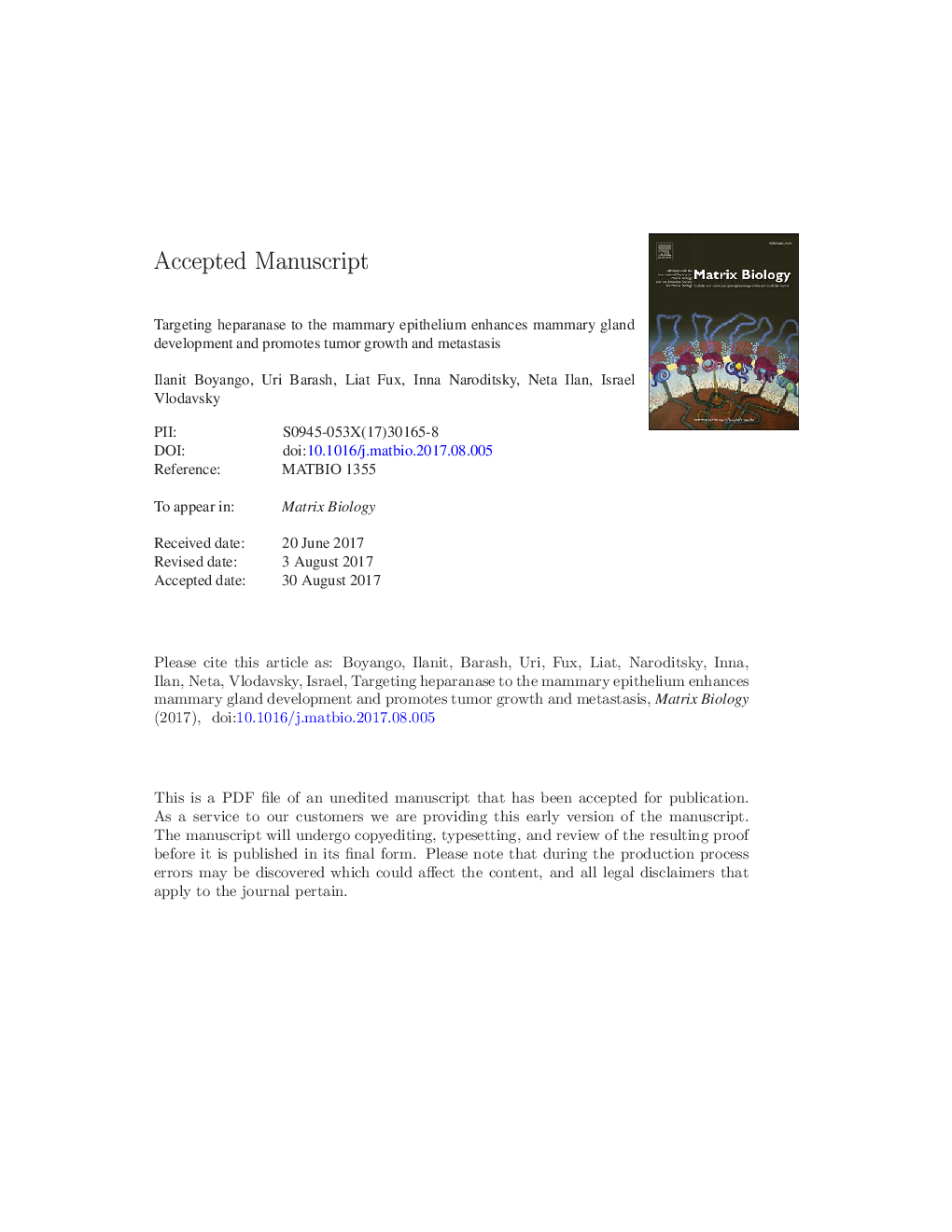| Article ID | Journal | Published Year | Pages | File Type |
|---|---|---|---|---|
| 8455103 | Matrix Biology | 2018 | 27 Pages |
Abstract
Heparanase is an endoglucuronidase that uniquely cleaves the heparan sulfate side chains of heparan sulfate proteoglycans. This activity ultimately alters the structural integrity of the ECM and basement membrane that becomes more prone to cellular invasion by metastatic cancer cells and cells of the immune system. In addition, enzymatically inactive heparanase was found to facilitate the proliferation and survival of cancer cells by activation of signaling molecules such as Akt, Src, signal transducer and activation of transcription (Stat), and epidermal growth factor receptor. This function is thought to be executed by the C-terminal domain of heparanase (8c), because over expression of this domain in cancer cells accelerated signaling cascades and tumor growth. We have used the regulatory elements of the mouse mammary tumor virus (MMTV) to direct the expression heparanase and the C-domain (8c) to the mammary gland epithelium of transgenic mice. Here, we report that mammary gland branching morphogenesis is increased in MMTV-heparanase and MMTV-8c mice, associating with increased Akt, Stat5 and Src phosphorylation. Furthermore, we found that the growth of tumors generated by mouse breast cancer cells and the resulting lung metastases are enhanced in MMTV-heparanase mice, thus supporting the notion that heparanase contributed by the tumor microenvironment (i.e., normal mammary epithelium) plays a decisive role in tumorigenesis. Remarkably, MMTV-8c mice develop spontaneous tumors in their mammary and salivary glands. Although this occurs at low rates and requires long latency, it demonstrates decisively the pro-tumorigenic capacity of heparanase signaling.
Related Topics
Life Sciences
Biochemistry, Genetics and Molecular Biology
Cancer Research
Authors
Ilanit Boyango, Uri Barash, Liat Fux, Inna Naroditsky, Neta Ilan, Israel Vlodavsky,
